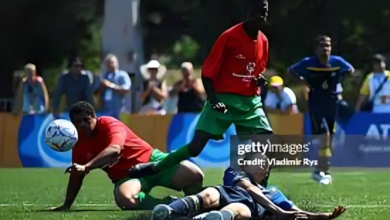Al Hilal FC A Legacy of Success and Ambition in Asian Football

Al Hilal Football Club, also known as Al Hilal SFC, has been one of the most successful and iconic clubs in Asian football. Founded in Riyadh, Saudi Arabia, in 1957, Al Hilal has not only dominated the Saudi Professional League but also established a powerful presence in AFC competitions, making it one of the most decorated clubs in the continent. Known for its loyal fanbase, consistent success, and ambitious goals, Al Hilal’s legacy continues to grow as it attracts world-class talent and expands its influence across Asia and beyond.
1. A Brief History of Al Hilal
Al Hilal was founded in 1957 by Abdul Rahman bin Saad Al Saud and became officially recognized by the Saudi Ministry of Youth in 1959. Since its inception, the club has been a dominant force in Saudi Arabian football. Al Hilal’s rise to prominence began in the 1970s when the team won its first league title in the Saudi Premier League, setting the foundation for a legacy that would grow over the decades.
The club’s nickname, “The Blue Wave,” reflects its bold, confident play style and the passionate support of its fans, who fill the stadium in blue and white. Al Hilal’s achievements in domestic competitions quickly garnered attention, making the club a symbol of pride for Saudi Arabian football fans.
2. Domestic Dominance in Saudi Arabian Football
Al Hilal has consistently been a top contender in the Saudi Professional League, securing more than 18 league titles as of 2023. This remarkable achievement places them at the top of the Saudi football hierarchy, far ahead of rivals. They have also achieved multiple domestic trophies, including the King’s Cup, Crown Prince Cup, and Saudi Super Cup, showcasing their ability to excel in every competition they enter.
Their domestic success is not only attributed to talented players but also a strong management team, visionary coaches, and a commitment to investing in top talent and facilities. The club’s strategy includes maintaining a mix of homegrown talent and foreign players, allowing it to stay competitive and resilient over the years.
3. Al Hilal’s Success in AFC Competitions
One of the standout aspects of Al Hilal’s reputation is its record in the Asian Football Confederation (AFC) Champions League. The club has won the AFC Champions League four times (as of 2023) and has consistently been a strong contender in the tournament. This achievement has made Al Hilal one of the most successful clubs in the history of the AFC Champions League.
Their success on the continental stage has solidified their status as one of the top Asian clubs, bringing pride not only to Saudi Arabia but to the entire Arab world. Al Hilal’s victories in the AFC Champions League have not only boosted the club’s profile but also raised the standard of Saudi and Asian football, inspiring other teams in the region to aim for similar success.
4. World-Class Players and Coaching Staff
Al Hilal has always attracted top talent, both locally and internationally. Over the years, the club has signed world-renowned players who have brought skill, experience, and leadership to the team. Players such as Sami Al-Jaber, Yasser Al-Qahtani, and Nawaf Al-Temyat have become legends in Saudi football, contributing significantly to the club’s success.
In recent years, Al Hilal has taken its ambitions to another level by signing international stars from various leagues around the world. The signing of big names like Sebastian Giovinco, Bafetimbi Gomis, and, most recently, Brazilian sensation Neymar, reflects Al Hilal’s commitment to being a top global club. These players have brought skill, media attention, and experience from European leagues, making Al Hilal even more competitive on the Asian and global stages.
The club’s coaching staff has also been crucial to its success. Al Hilal has appointed world-class coaches who bring strategic depth, modern tactics, and international experience to the team. The appointment of coaches like Ramon Diaz, who led the team to several victories, reflects the club’s commitment to investing in quality coaching that matches the talent of its players.
5. Strong Fanbase and Club Culture
Al Hilal boasts one of the most passionate fanbases in Asia. The fans, known as “Al Hilaliyin,” are dedicated and fervent supporters who attend games in huge numbers, creating an electrifying atmosphere in every match. Home games at the King Fahd International Stadium and Prince Faisal bin Fahd Stadium are a testament to this passionate following, with fans turning out in blue and white to support their team.
The club’s culture emphasizes loyalty, pride, and resilience, values that are reflected in the fanbase’s unwavering support. Al Hilal fans are known for their deep connection to the club and are an essential part of its identity. Their loyalty has been a driving force behind the club’s success, motivating players to perform at their best in every match.
6. Al Hilal’s Vision and Future Goals
Al Hilal’s vision goes beyond success in Saudi Arabia and Asia. The club aims to become a globally recognized brand and one of the top teams in the world. With strategic investments in star players, state-of-the-art facilities, and world-class coaching, Al Hilal is positioning itself as a global contender.
The recent acquisition of Neymar, for instance, highlights the club’s ambition to attract high-caliber players and expand its influence. Al Hilal’s leadership has made it clear that they intend to compete not just on the Asian level but on the international stage, with the goal of participating in the FIFA Club World Cup and eventually challenging top teams from Europe and South America.
The club’s commitment to youth development is also notable. Al Hilal has established academies that focus on identifying and nurturing young talent. This approach ensures a steady pipeline of skilled players who can contribute to the club’s success in the future, balancing the acquisition of international stars with the development of homegrown talent.
7. Challenges and Rivals
Despite its success, Al Hilal faces competition and challenges from local and international clubs. In the Saudi league, Al Ittihad and Al Nassr are among the fiercest rivals, providing tough competition. The matches between these teams are highly anticipated and attract attention from fans across the region. Al Hilal’s rivalry with these clubs adds excitement to the league, with each match drawing massive viewership.
Al Hilal also faces challenges in the AFC Champions League, competing against strong teams from countries like Japan, South Korea, and Iran. Maintaining its dominance in Asia requires consistent investment, skill, and strategic planning, as the level of competition in Asian football continues to rise.
8. Impact on Saudi and Asian Football
Al Hilal’s success has had a profound impact on Saudi Arabian and Asian football. The club’s achievements have inspired other teams in the region to invest more in their players and infrastructure, raising the overall standard of football. The club’s influence has also been instrumental in promoting Saudi football on the international stage, attracting attention from media, sponsors, and fans worldwide.
The Saudi government’s Vision 2030, which aims to diversify the economy and promote sports, has aligned with Al Hilal’s ambitions, creating a supportive environment for the club’s growth. Al Hilal’s success also reflects the country’s growing commitment to sports development, showcasing Saudi Arabia’s potential as a football powerhouse.
Conclusion
Al Hilal FC is more than just a football club; it’s a symbol of excellence, ambition, and pride for Saudi Arabia and Asia. With a history of domestic and international success, a passionate fanbase, and a forward-looking vision, Al Hilal is poised to continue its legacy in global football. The club’s commitment to excellence and ambition to compete on the world stage make it one of the most exciting and influential teams in Asian football. As Al Hilal continues to evolve, it will undoubtedly inspire the next generation of players and fans, solidifying its place in the annals of football history.




